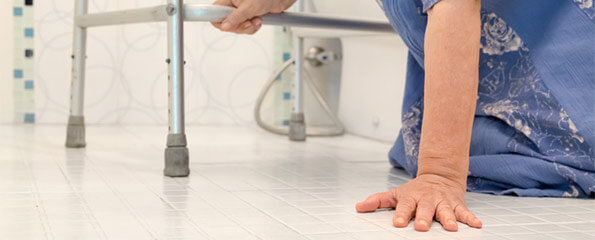Gait monitoring app could help prevent falls
Understanding how people balance and walk as they age and anticipating a potential fall may soon involve little more than a smart phone app, thanks to a PhD project being undertaken at the University of Canberra.
Physiotherapists currently rely on expensive ‘force-plate’ technology, involving complex equipment, to gauge how people walk (gait).
University PhD candidate Hafsa Ismail is investigating an alternative method using inexpensive video equipment to produce a new walk assessment tool that could prevent falls.
Using two cameras, and taking into account that a person’s gait is as unique as their own fingerprints, Ms Ismail is filming older people from different angles to compare their movement with the results of force-plate analysis.
The project aims to create a computer program or an app which could be used by older people themselves to capture their walking. Over time, it would alert them or their carers to changes in the way they walk that might mean an increasing risk of suffering a fall.
Ms Ismail said preventing falls is the aim but making it easier for older people to know when they should seek professional advice from a general practitioner or a physiotherapist is also important.
“I’d like to see this system installed in aged care facilities, where people could be instantly assessed while walking to get their meals three times a day, for example; their carers could be alerted when their walk deteriorates,” Ms Ismail said.
To advance to the next stage of her study, Ms Ismail is looking for Canberrans aged 60 years and over to attend a session and spend 10 minutes walking and balancing in a short series of three poses for the cameras as she compiles individual movement data.
The quick test would then be repeated three months later to determine if any changes have occurred in the person’s gait.
“I am currently combining the two methods, a traditional force-plate and the videos to compare the data and see the correlations that can be drawn to establish a ground truth,” Ms Ismail said.
“The research looks at the movement of participants’ legs, but also at how their torso moves or sways as they walk.
“I’m hoping that by comparing the data, we can spot changes in the video that relate to what the force-plate is detecting. Then we can begin to program computers to analyse these videos looking for similar changes.”
The project is being supervised by University of Canberra professor of affective computing Roland Goecke, professor of physiotherapy Gordon Waddington and the CSIRO’s Data61 group.
Dr Hanna Suominen, who leads Data 61’s natural language processing team, said the technology can be used in various ways.
“This technology can also be used to monitor the severity of head injuries experienced by athletes,” Dr Suominen said.
“It is fantastic to supervise such an important project which draws on machine learning and analytics, both areas of expertise at Data61, in combination with the University of Canberra’s computer vision and health sciences capabilities.”
People interested in participating in Ms Ismail’s research can contact her on Hafsa.Ismail@canberra.edu.au.
(Source: University of Canberra)
Dates
Tags
Created by:

 Login
Login














